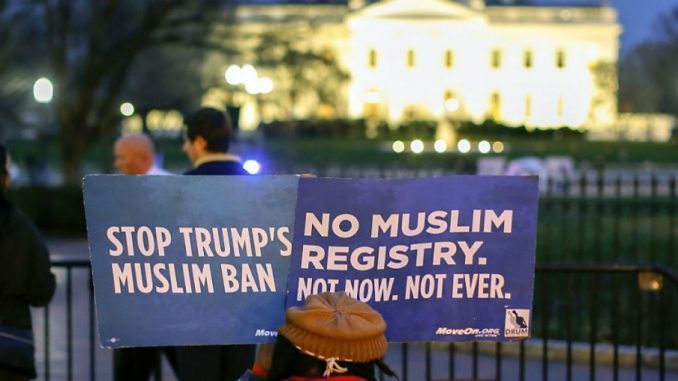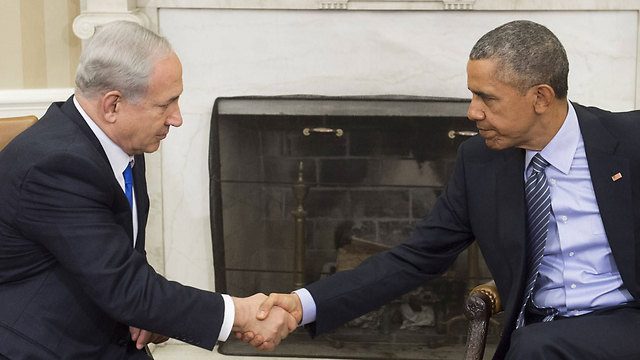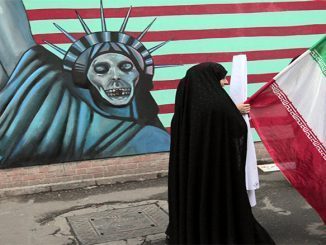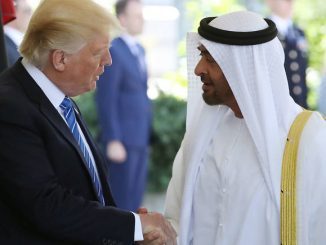
The revised travel ban of the US President Donald Trump was blocked by a federal judge in Hawaii who issued a temporary restraining order, just hours before the order came into effect.
Donald Trump has signed in January an executive order that will limit immigration and refugees from some Muslim-majority countries, fulfilling a campaign-trail promise to introduce what he dubbed “extreme vetting.”
The order bans Syrian refugees, claiming they are “detrimental” to the interests of the United States, and suspends the refugee admissions program for all countries for 120 days. It will also suspend the issue of visas to nationals of countries where the US believes they do not provide enough information on an applicant to decide whether or not they are a security or public safety threat.
Those countries were Iran, Iraq, Libya, Somalia, Sudan, Syria, and Yemen.
This order created chaos in the US as many considered it unlawful and sought to stop its implementation, and was blocked later by several federal courts in the US.
However, Trump’s administration kept working on a new travel ban order and announced it on March 6.
The new order and the changes it’s brought
President Donald Trump has signed a revised executive order banning refugees and citizens from six Muslim-majority nations from entering the United States.
For 120 days, the US will not allow any new refugees into the country and for 90 days, visas will not be issued to people from Iran, Libya, Somalia, Sudan, Syria, and Yemen.
These are the major changes to Trump’s first immigration order, which was blocked in the courts.
Iraqis off the list – Iraqis are removed from the list of banned nationals. The White House said Iraq was removed because it has imposed new vetting procedures such as heightened visa screening and data sharing, and because of its work with the US in countering ISIS.
Only new visa applicants included – Travellers from the six banned countries who already have visas, and refugees who have already been given visas will not be barred from entering the US.
“Green card” holders and dual citizens exempt – Permanent residents of the US or dual-national citizens from listed countries will not be turned away and “green card” holders traveling abroad will no longer be at risk of being unable to return home.
Implemented from March 16 – The original ban took effect immediately, without warning, causing chaos at airports as travelers already midair when the order was signed were detained in airports and others were prevented from boarding planes.
Syrian refugees not singled out – The original order banned refugees from Syria from entering the US indefinitely. The new order removes that clause.
Loophole closed for religious minorities – While the original order made an exception for refugees who are members of “persecuted religious minorities”, saying they could enter the US despite the ban, the new order has no mention of religion.
Blocking the travel ban again
A ruling by a federal judge in Hawaii Wednesday resulted in a temporary restraining order nationwide, hours before it was set to go into effect. In a decision published Thursday morning, another federal judge in Maryland specifically blocked the 90-day ban on immigration for citizens of six Muslim-majority countries.
In a 43-page ruling, US District Court Judge Derrick Watson, who resides in Honolulu, concluded in no uncertain terms that the new executive order failed to pass legal muster at this stage and the state had established “a strong likelihood of success” on their claims of religious discrimination.
US District Judge Derrick Watson concluded in his ruling that while the order did not mention Islam by name, “a reasonable, objective observer … would conclude that the executive order was issued with a purpose to disfavour a particular religion”.
Trump decried Watson’s ruling during a rally Wednesday night in Nashville, introducing his statement as “the bad, the sad news.”
“The order he blocked was a watered-down version of the first one,” Trump said, as the crowd booed the news.
“This is, in the opinion of many, an unprecedented judicial overreach,” he added, before pledging to take the issue to the Supreme Court if necessary.
Attorneys for the American Civil Liberties Union and other groups said that Trump’s statements on the campaign trail and statements from his advisers since he took office make clear that the intent of the ban is to ban Muslims.
Trump policy adviser Stephen Miller has said the revised order was designed to have “the same basic policy outcome” as the first.
How could Hawaii block Trump’s travel ban?
This lawsuit was brought by an individual, an imam named Ismail Elshikh, as well as the state of Hawaii. A state can file a lawsuit in a federal court on behalf of its people. The state represents the interests of its people who have constitutional rights – including equal protection of the laws and protection against religious discrimination by the government. The state can also represent the interests of the business community and its own state-run universities.
In deciding whether to temporarily stop the travel ban from going into effect, the court looked at whether the ban was likely to violate the constitutional rights of Hawaiians, and also at the “balance of harms” – whether the harm done to Hawaii and its people if the travel ban is implemented (which included loss of tourism dollars and damage to universities through loss of funds, students, and/or teachers) is greater or worse than the harm done to the national security interests the Trump administration is trying to protect if it is not.
How can a federal court halt a president’s executive order?
Under the US constitution, power in the federal government is split between the president, the courts, and politicians. And because of the rights of citizens set out in the constitution (including freedom from religious discrimination), there are things a president simply cannot do. Ultimately, the court said the travel ban had to be halted because it was likely that it violated the constitutional rights of the people of Hawaii.
What happens next?
President Trump has said he will take the case “as far as it needs to go”. The first step will be the 9th Circuit Court of Appeals, which will either uphold the temporary restraining order, or cancel it. The losing side – the Trump administration or the state of Hawaii – can appeal the Court of Appeals’ decision in the Supreme Court.
In court, is it only the text of the executive order that matters or will judges also look at statements made by the Trump administration?
Courts will look at the intent of the law, not only the words. Trump’s campaign rhetoric was pivotal in the Hawaii court’s decision, as it was in the earlier decisions halting his first travel ban. During his campaign, Trump promised a ban on Muslims entering the country. This is discrimination on the basis of religion, which is unconstitutional. Taking certain language out of the executive order does not mean that the administration’s intent can no longer be considered by a court.



